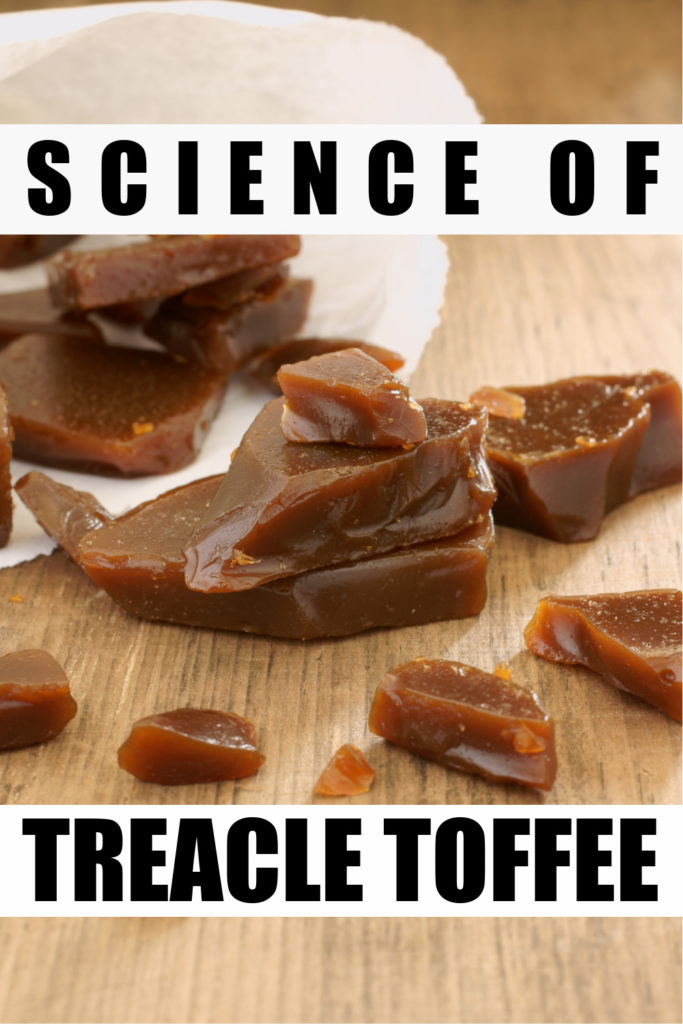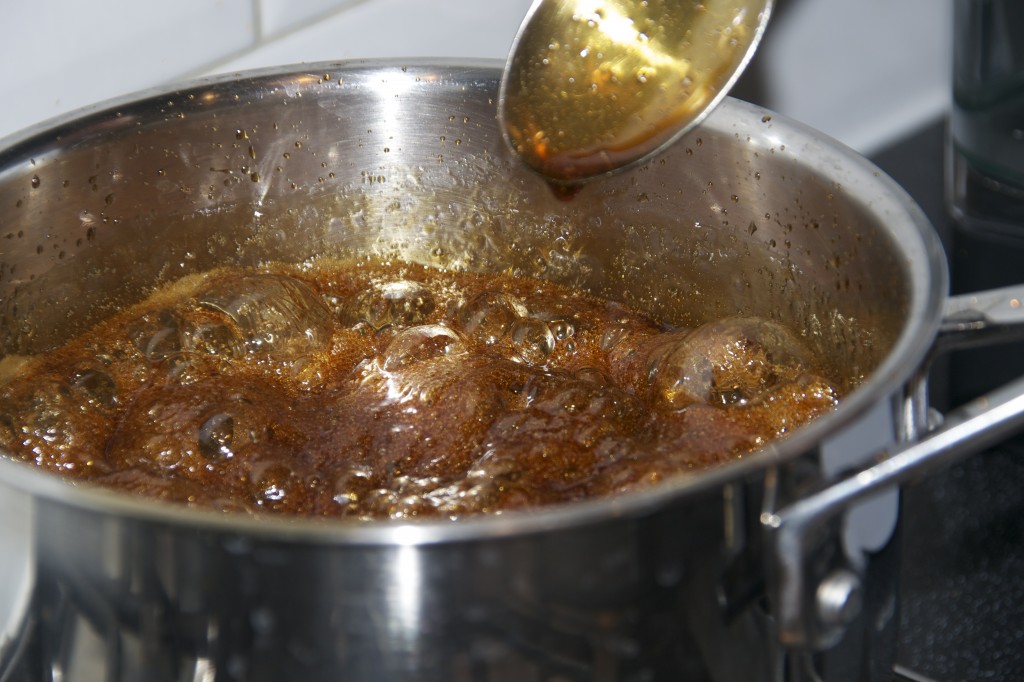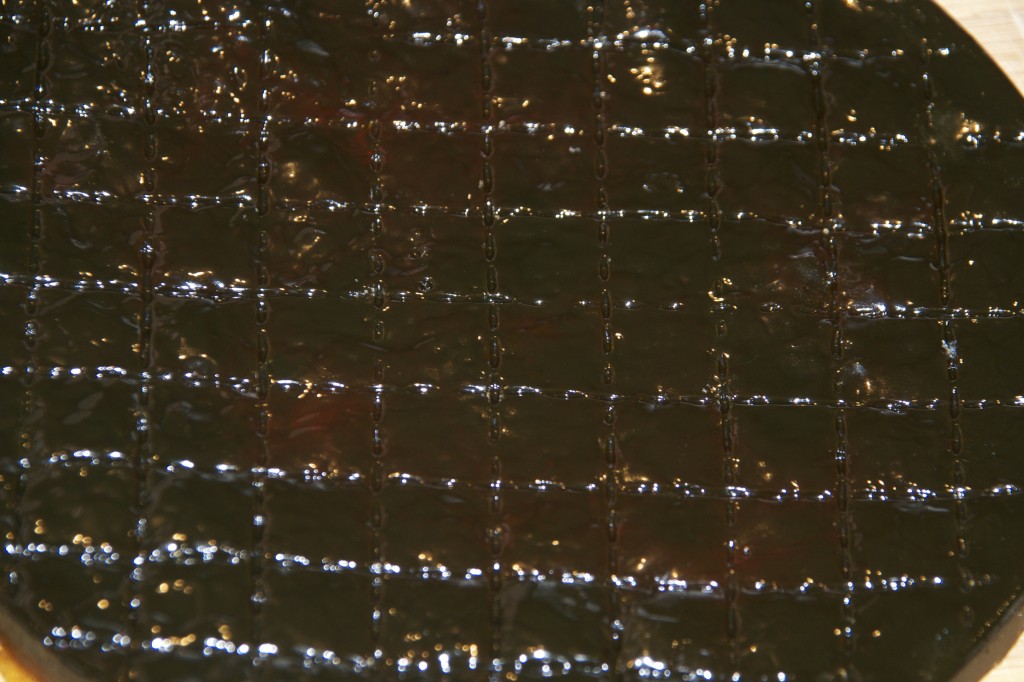I love treacle toffee, it always reminds me of bonfire nights where we’d go out wrapped up warm in hats and scarves with everything smelling a bit smoky. This treacle toffee recipe is a great way to explore changes of state, as you have to melt the sugar first and then leave it to harden.
What you need to make treacle toffee
500g brown sugar
150ml water
¼ tsp cream of tartar
75g butter
100g black treacle
100g golden syrup
Treacle toffee recipe
- Place the sugar and water in a pan and heat, stirring gently. The sugar will melt, and the two liquids combine.
- Add the rest of the ingredients and heat gently for about 10 minutes. You need to get the mixture to 143oC, which is known as the soft crack stage. If you don’t have a sugar thermometer, carefully drop a little of the mixture into cold water. When it separates into threads which are hard but not brittle, it is ready.
- Pour into an oiled tin, and leave to set. You can either mark the mixture with a knife before it sets or break it with a little hammer later on.
As we made the toffee, I showed the children the sugar in its solid state and asked them how they thought we could melt it. My 4-year-old wanted to leave it out in the sun, but we decided heating on the hob might be faster.
As the sugar melted, we could smell a toffee like smell, and as it got hotter and hotter, we saw more and more bubbles.
The science part
This experiment is a great way to demonstrate the process of changing state from solid to liquid and back again.
Everything we know exists in three states: A solid, A liquid or a Gas!
Substances can change from one state to another by different processes.
SOLID ––> LIQUID = MELTING
LIQUID ––> GAS = EVAPORATING/BOILING
GAS ––> LIQUID = CONDENSING
LIQUID ––> SOLID = COOLING/FREEZING
When the sugar was heated, it changed from solid to liquid which is an example of melting, and when we move back from a liquid into a solid, it is an example of cooling/freezing.
The reason this happens is that when you provide heat, the particles that make up the solid are given energy which causes them to vibrate, which breaks the bonds holding them together. As they cool, they lose this energy and so form bonds again, but not in the same shape.
At the soft crack stage, the amount of water left in the mixture is very low. This gives a hard but still chewy toffee. For harder toffees and lollipops, you need to heat to the hard crack stage when there is almost no water left.
A much simpler way to demonstrate changes of state would be to melt chocolate and make rice krispie cakes!
More kitchen science for kids
Discover the science of meringue, have a science bake off or try one of my other delicious kitchen science experiments for kids.
The sugar mixture gets very hot, always ask an adult to help

Last Updated on May 17, 2023 by Emma Vanstone



This really looks delicious!
It was, but a bit chewy!
Oooh yummy. My kids would ADORE this.
It was fun!